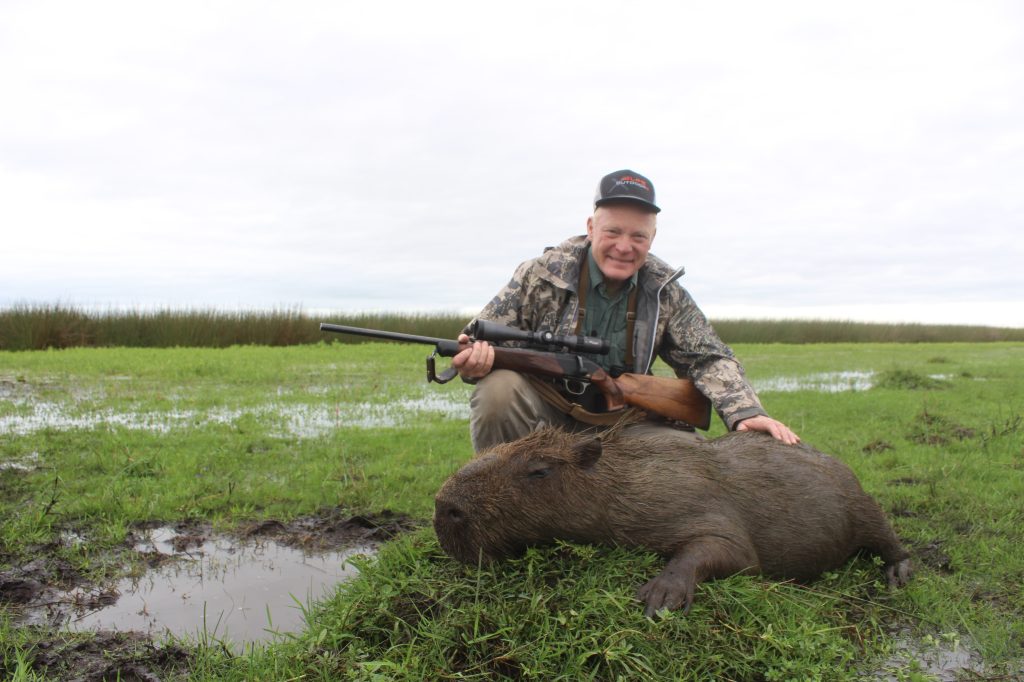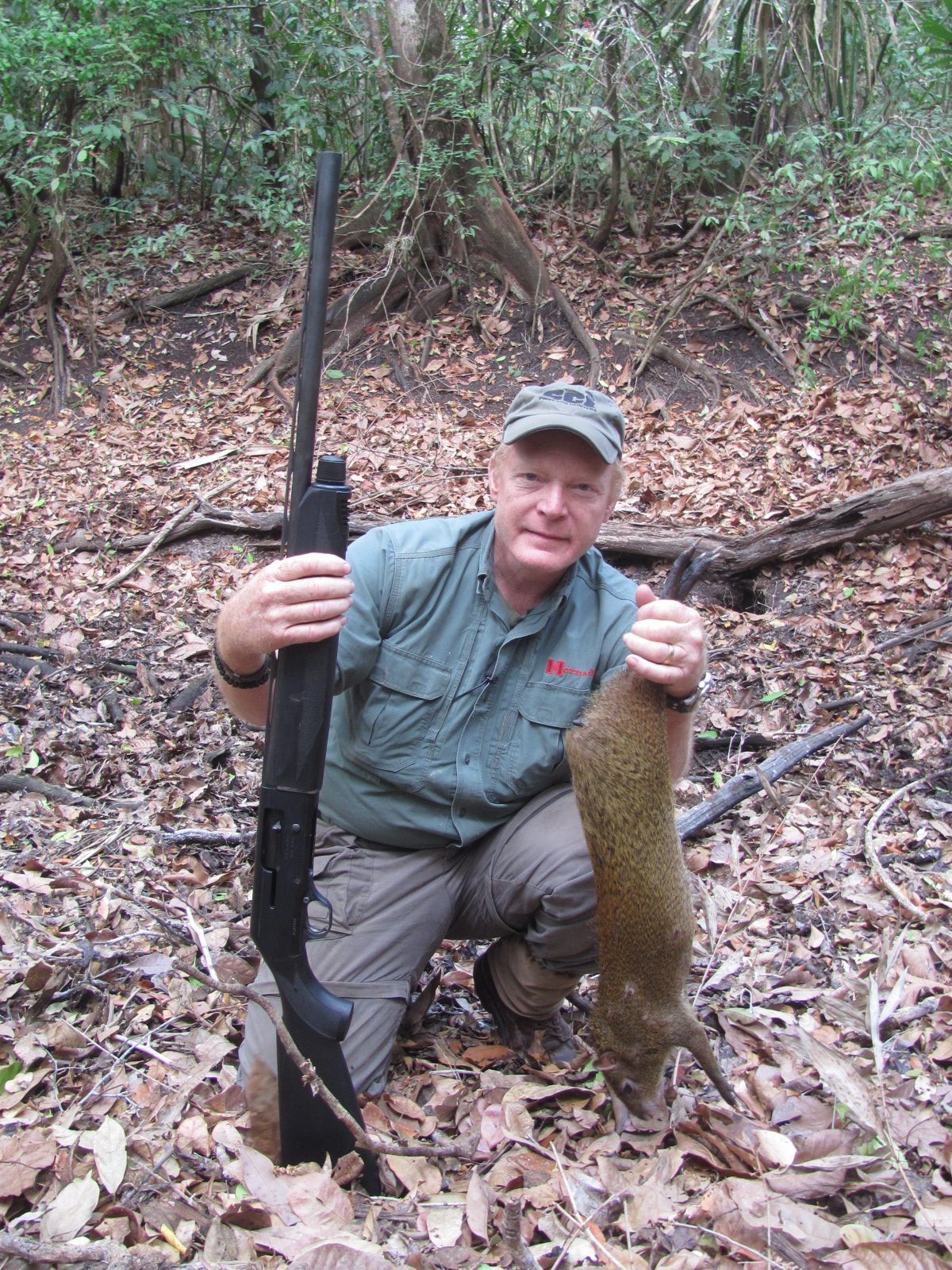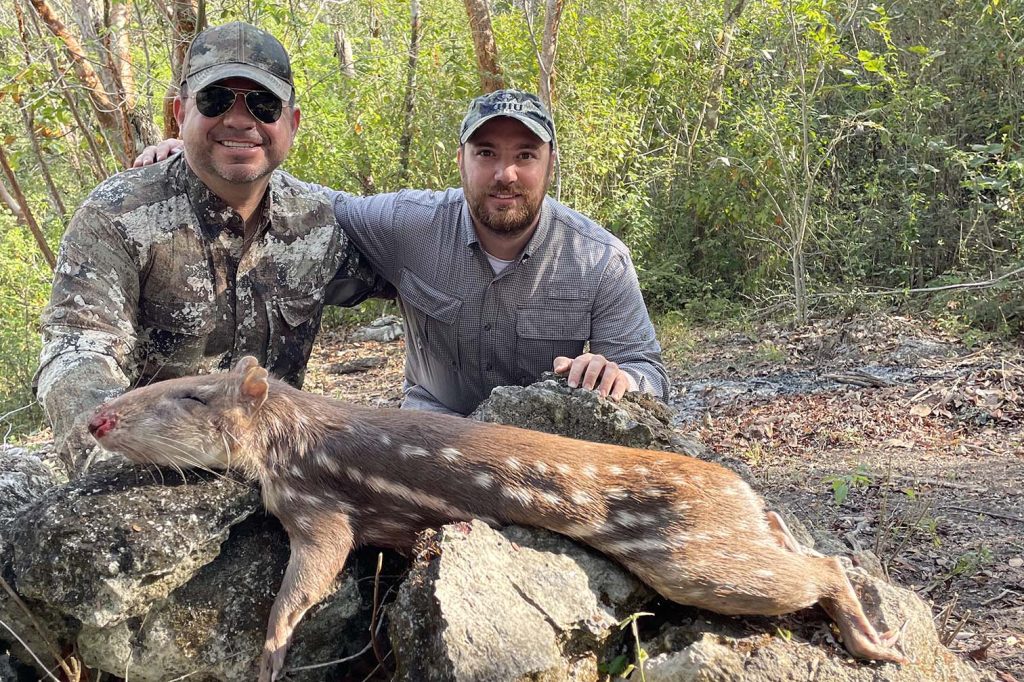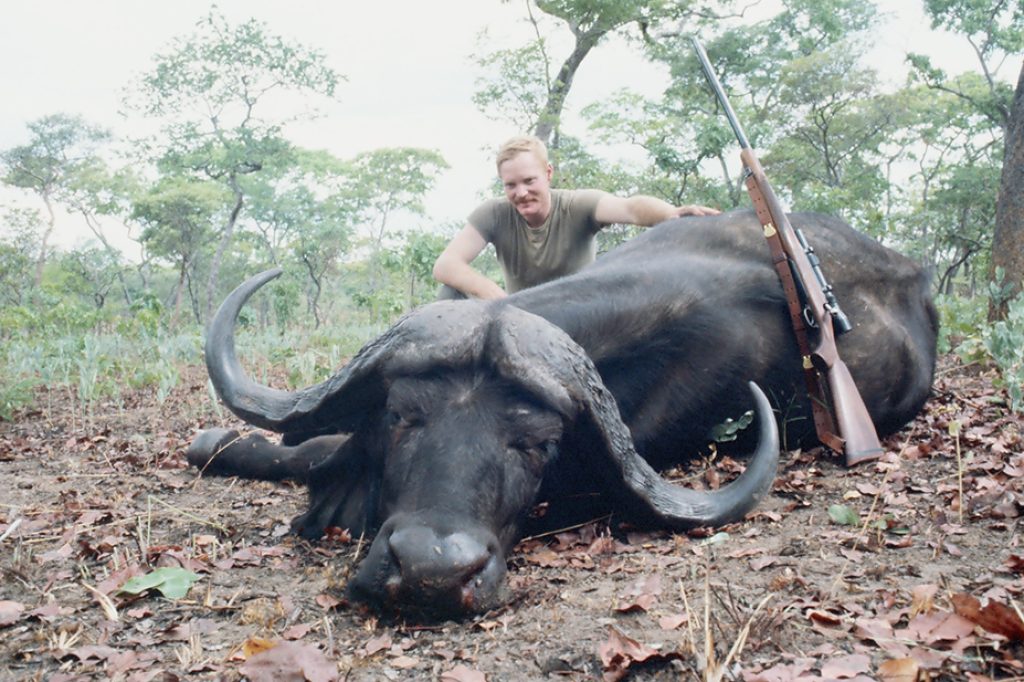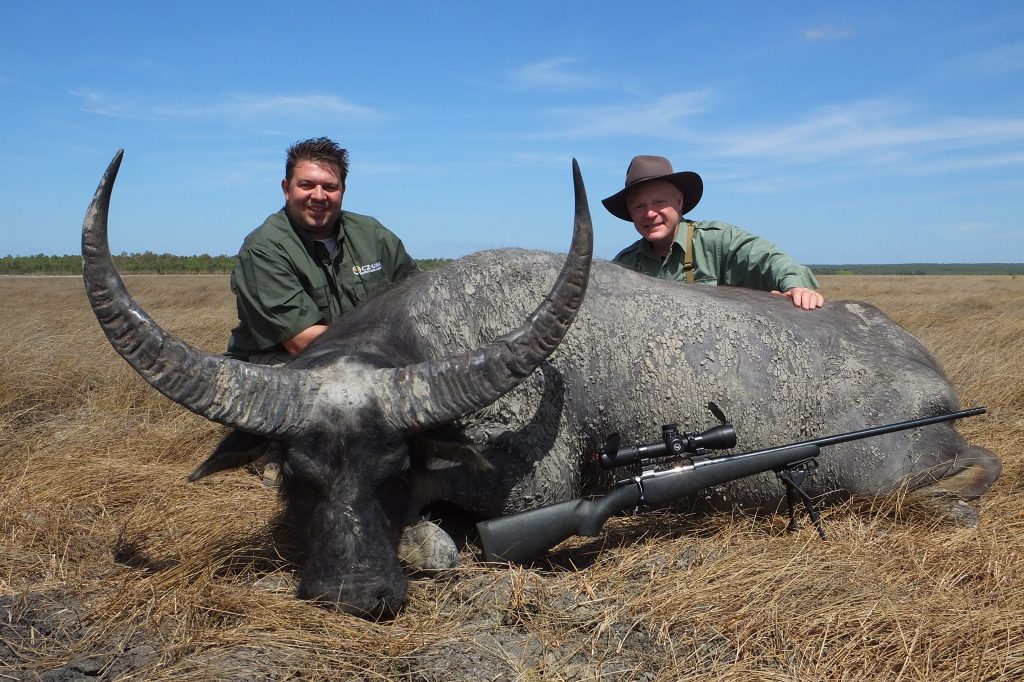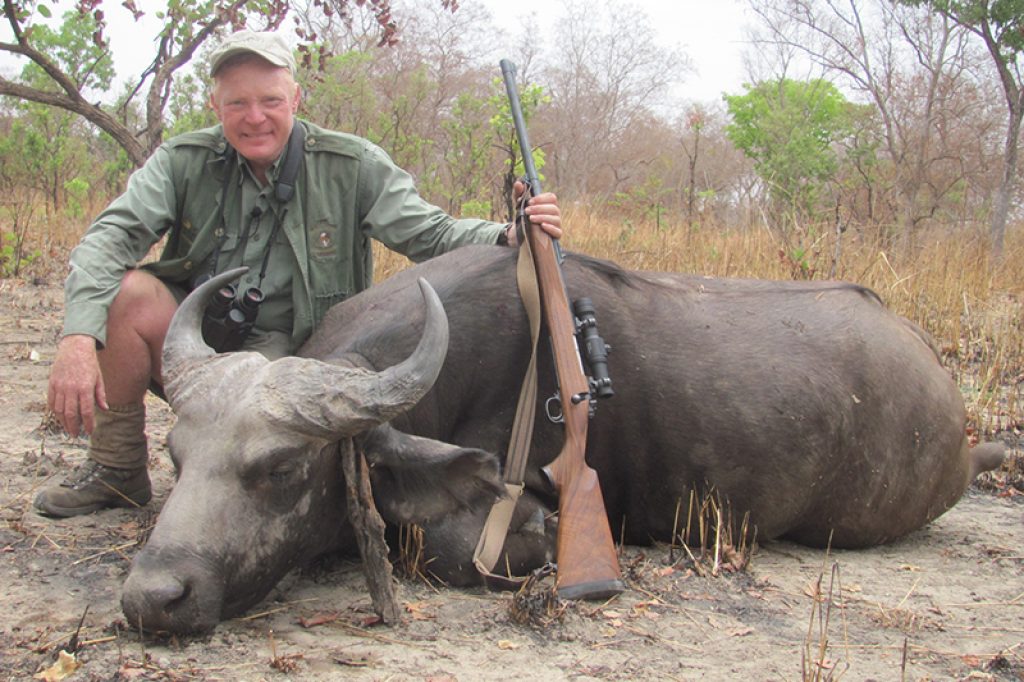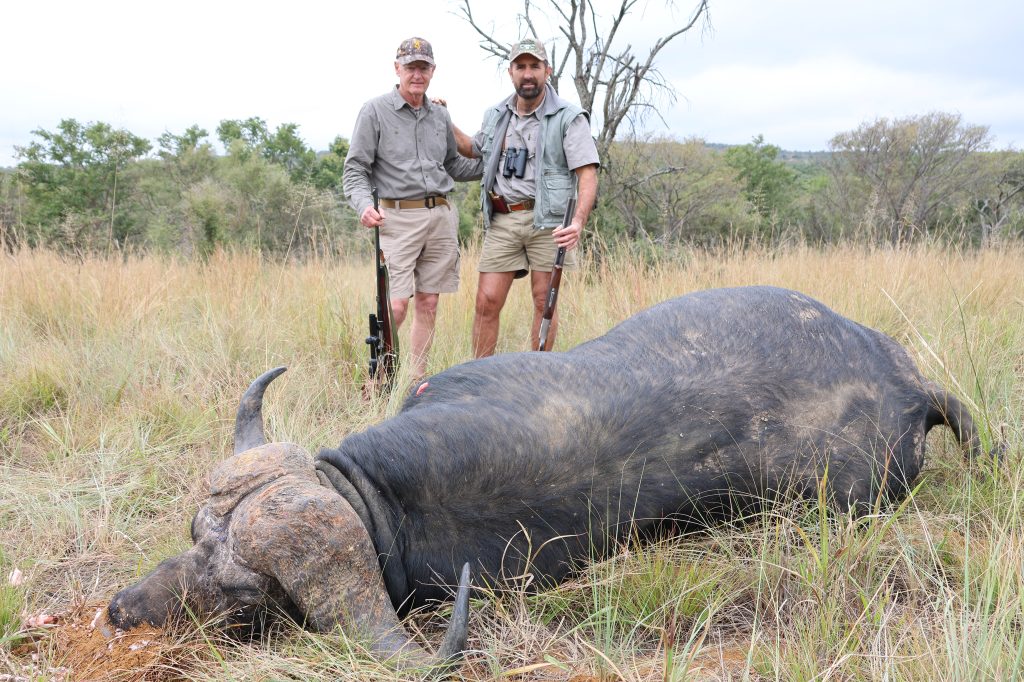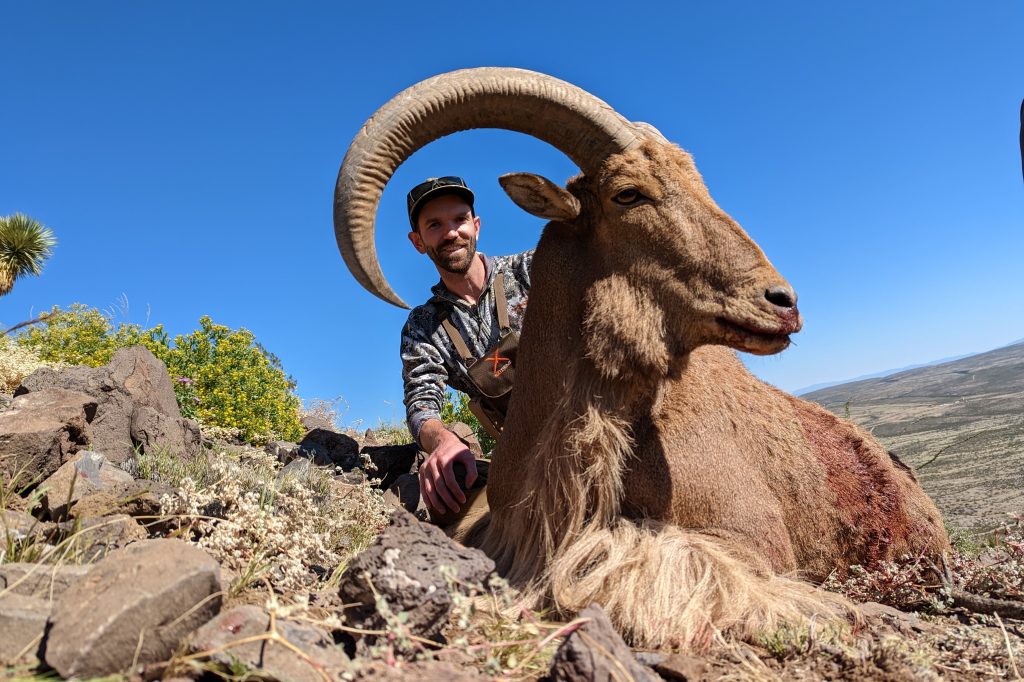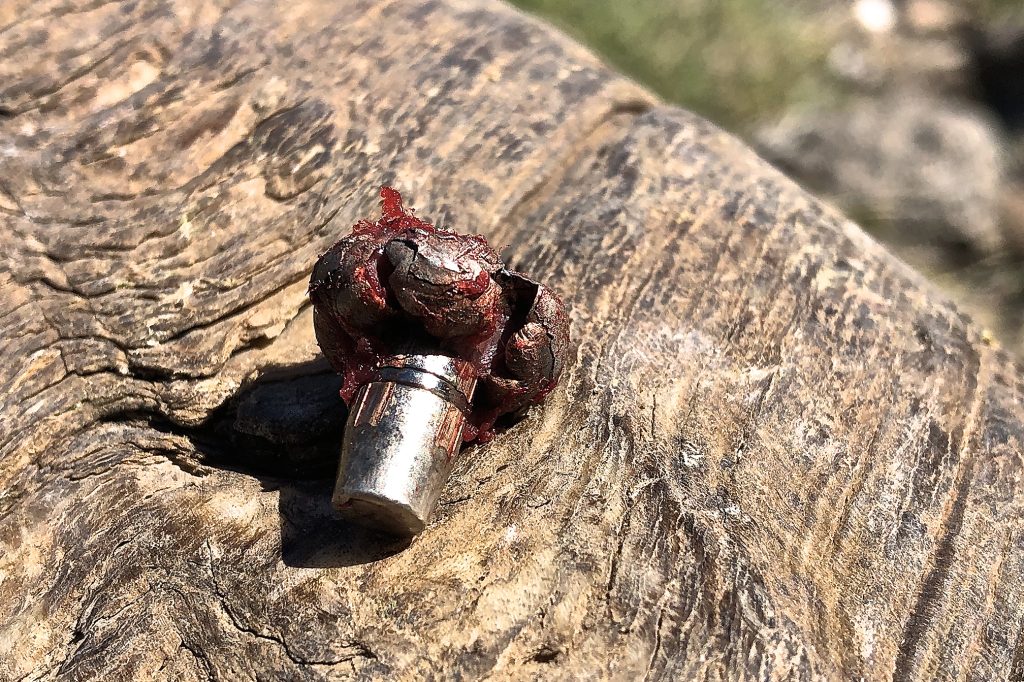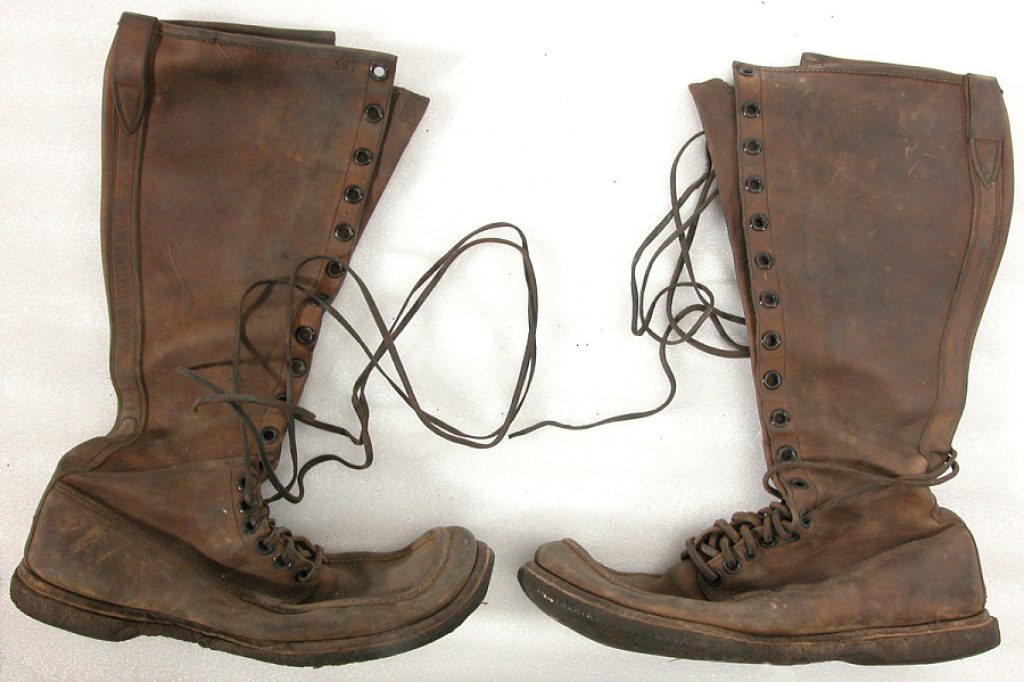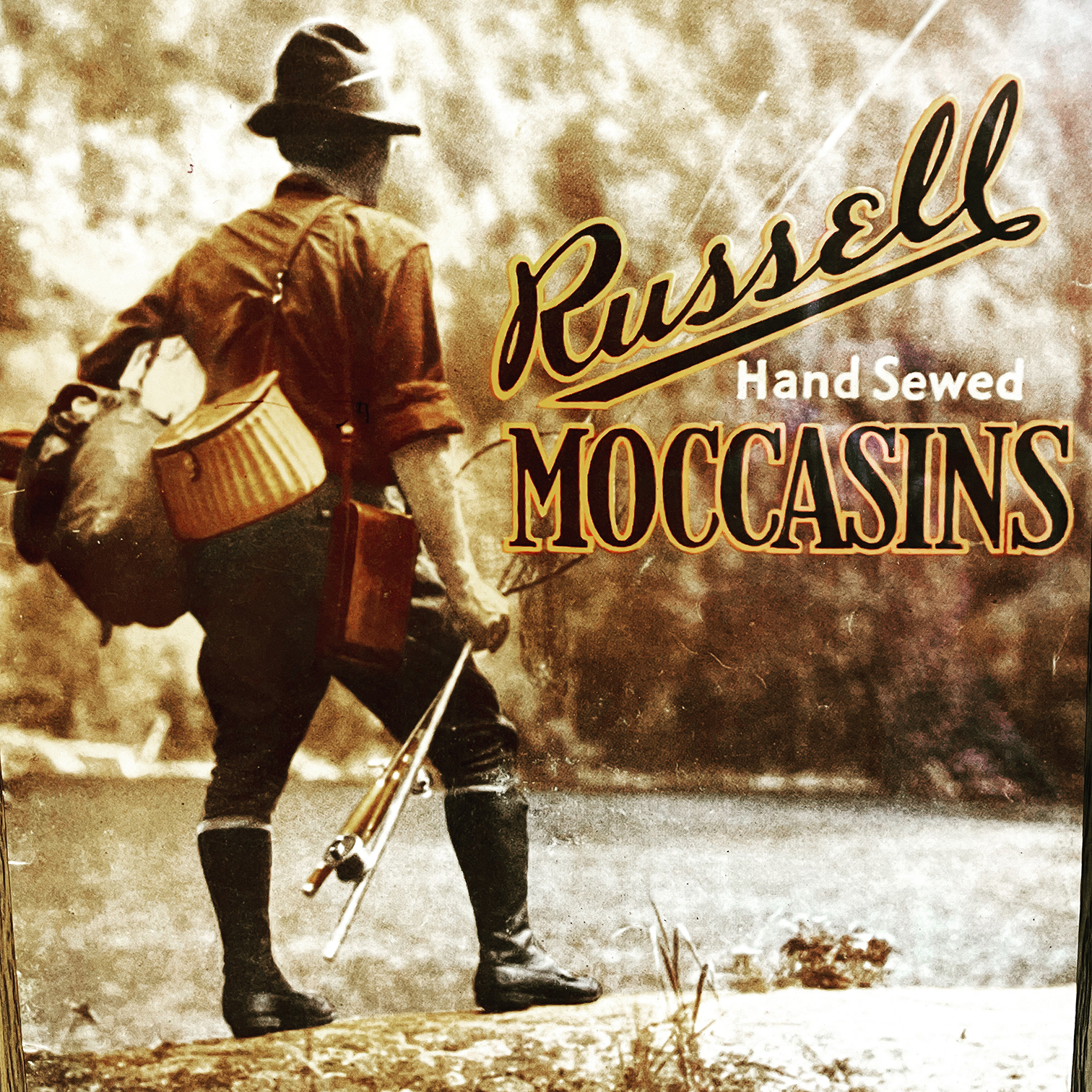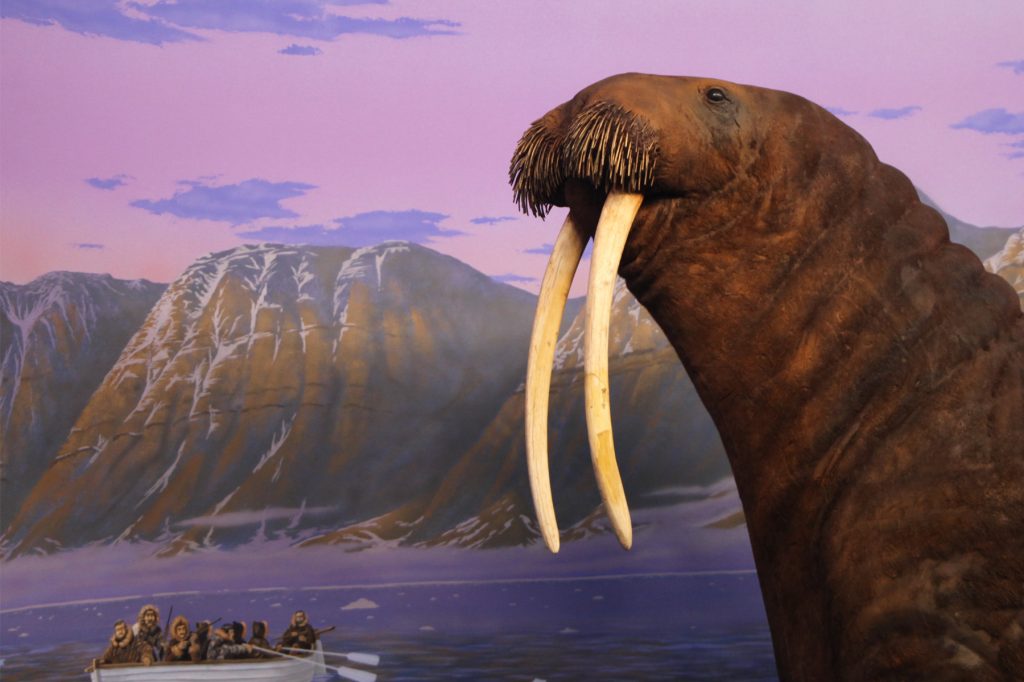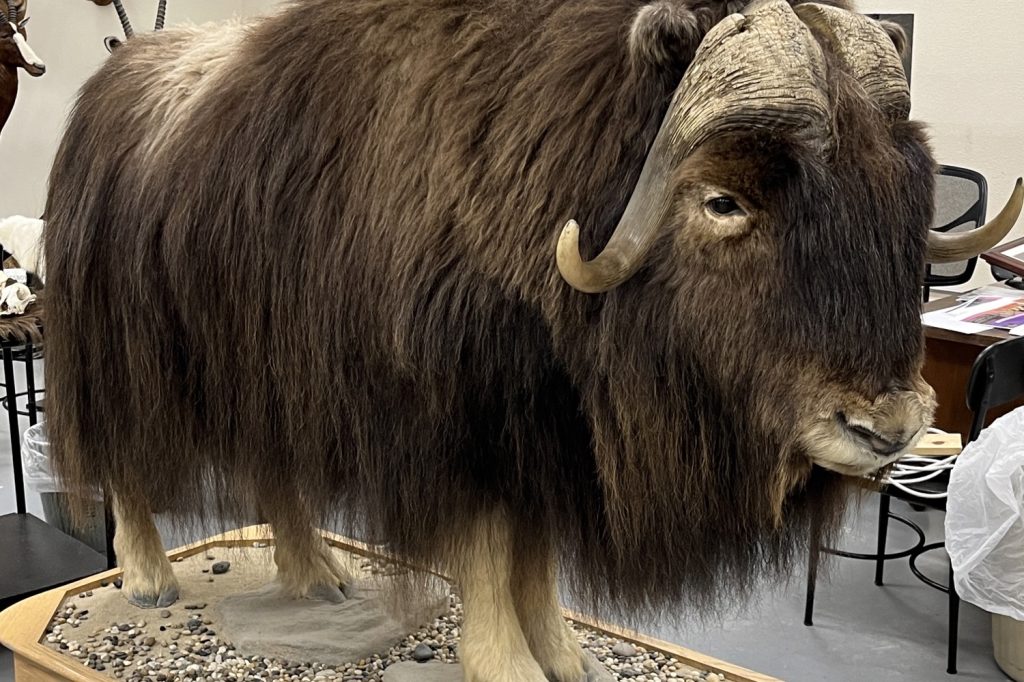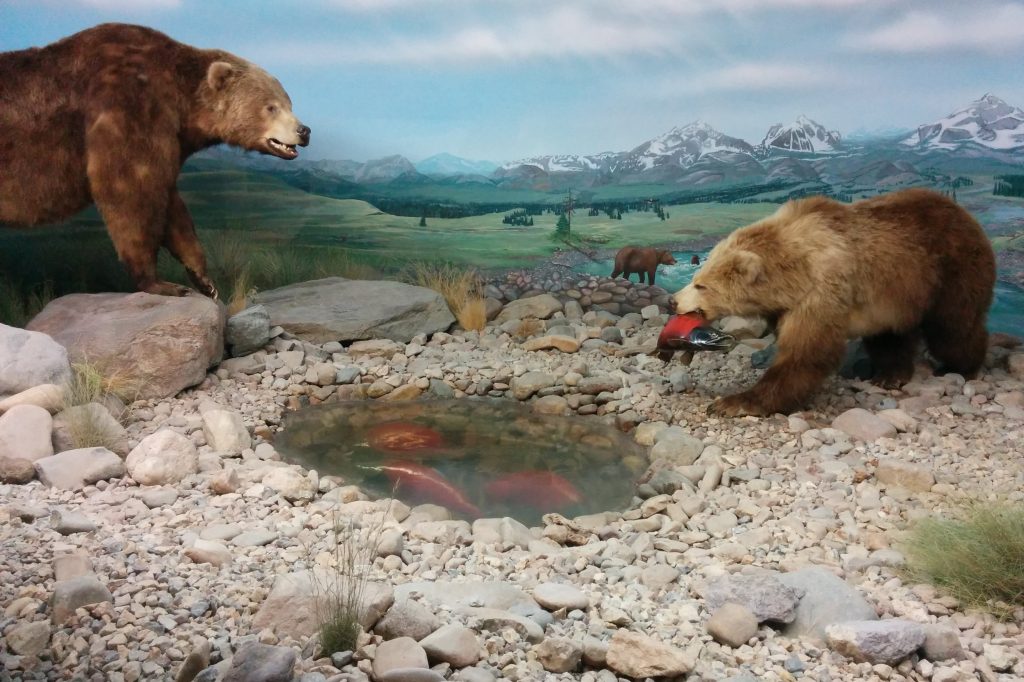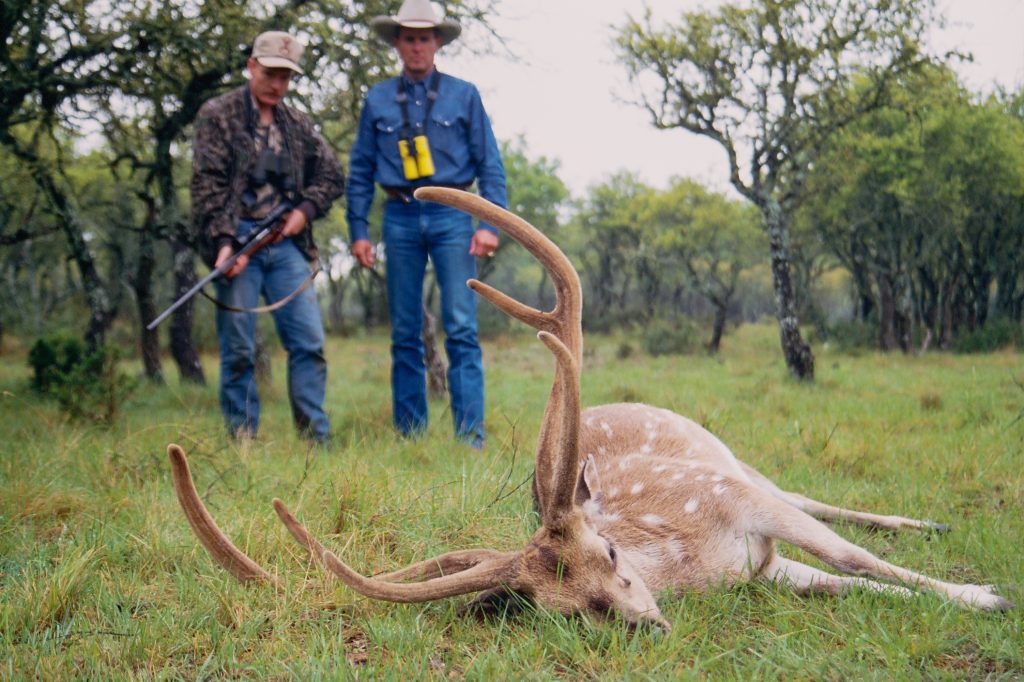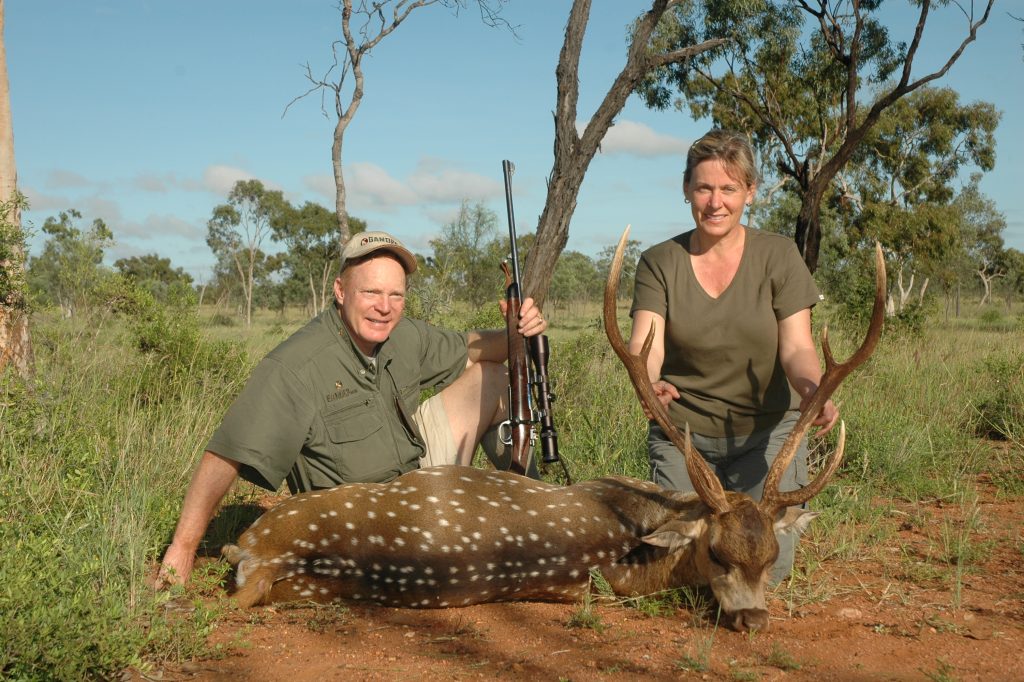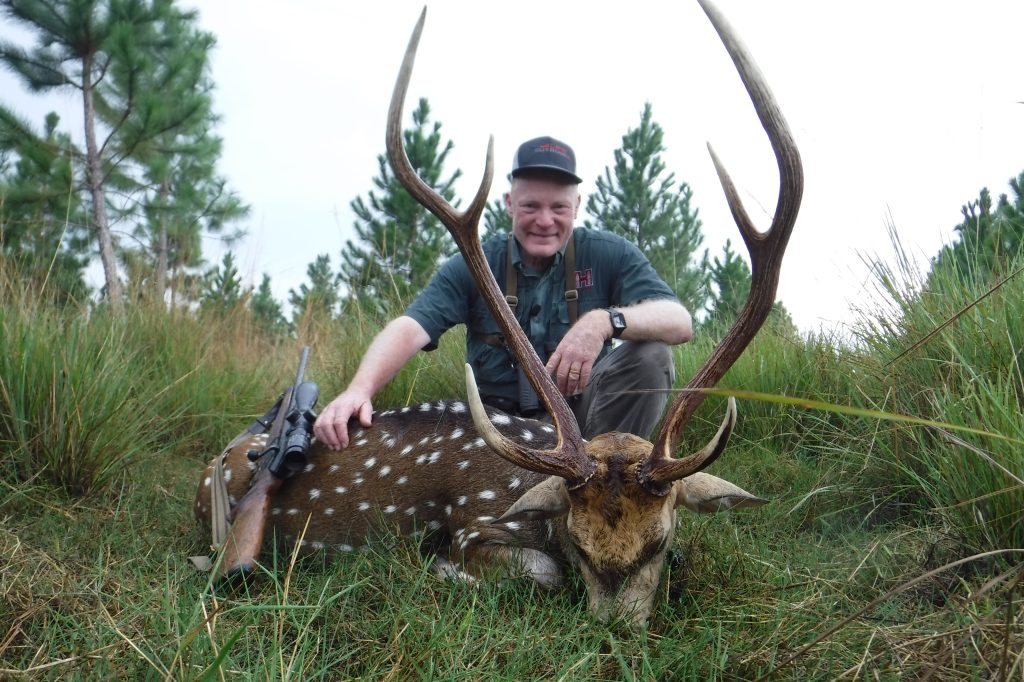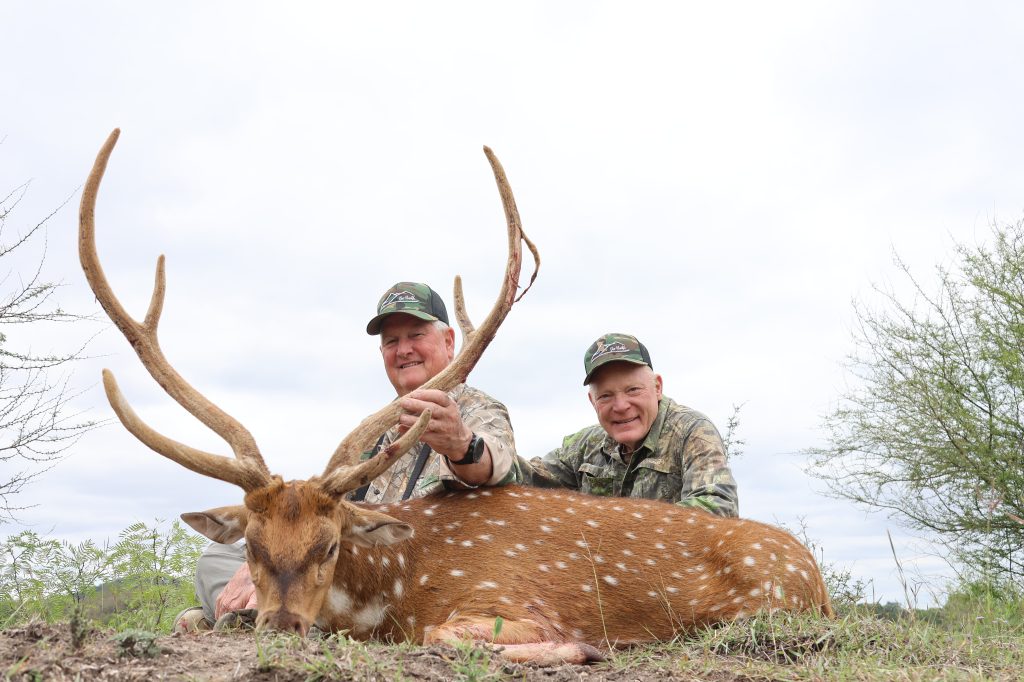Where and when to hunt these big-antlered bulls of the high country.
Photo above by Donald M. Jones/donaldmjones.com
My wife, Wendy, and I were sitting by the fire in the crisp morning air planning our day. We had spent the previous day leading a string of pack horses on the twenty-mile ride from our main camp in to our caribou spike camp, which was located right at timberline next to a high mountain lake. Several caribou hunters were due to arrive in a week’s time, and we had decided to make an advance run with supplies to reduce the amount that would have to be packed in with the hunters.
The plan for the next few days was to check the trails into the alpine. It had been several months since we had last ridden into the area, and there was a good chance that a few rocks had rolled onto the trails, or that blowdowns might need to be cut out of the way.
We also wanted to see how many caribou were hanging around in the high country. On early season hunts, the temperatures can still get hot enough that the caribou seek out the remaining patches of snow to bed in and cool off. The cool mountain breezes also provide some relief from the various biting insects that make the warm months of the year a bit of living hell for caribou.
After breakfast we saddled a couple of horses. I tied a chainsaw and shovel to the sawbuck on one of our pack horses, and we pointed our ponies up one of our trails, anticipating a great day in the high country of central British Columbia. There is something magical about being above timberline; it produces a sense of well-being that most sheep and goat hunters can identify with.
The trails turned out to be relatively clear of obstructions, and within a few hours we found ourselves up on a ridge, taking in the incredibly beautiful vistas before us. We hobbled the horses and allowed them to graze in a small depression that contained several pools from an underground spring, then sat down and set up the spotting scope to glass distant basins for caribou. It didn’t take long to locate a small herd of cows and calves that had bedded down on a patch of snow about a mile away.
I told Wendy I had found a few “boo” and she quickly said, “I see some caribou, too.” I asked her where they were and she said, “They are about to run over you.” Assuming she was messing with me, I turned to look at her and simultaneously I heard the pounding of hoofs and the unique sound of the tendons clicking in their feet as several young bulls and a handful of cows and calves went thundering by just a few yards away.
We had a good laugh at this close encounter of a caribou kind, but our horses were less than impressed by the caribou blowing through at close quarters and it took a few minutes to calm them down. Hobbles were designed for a reason, and there are times when they can save cowboys from doing a lot of walking.
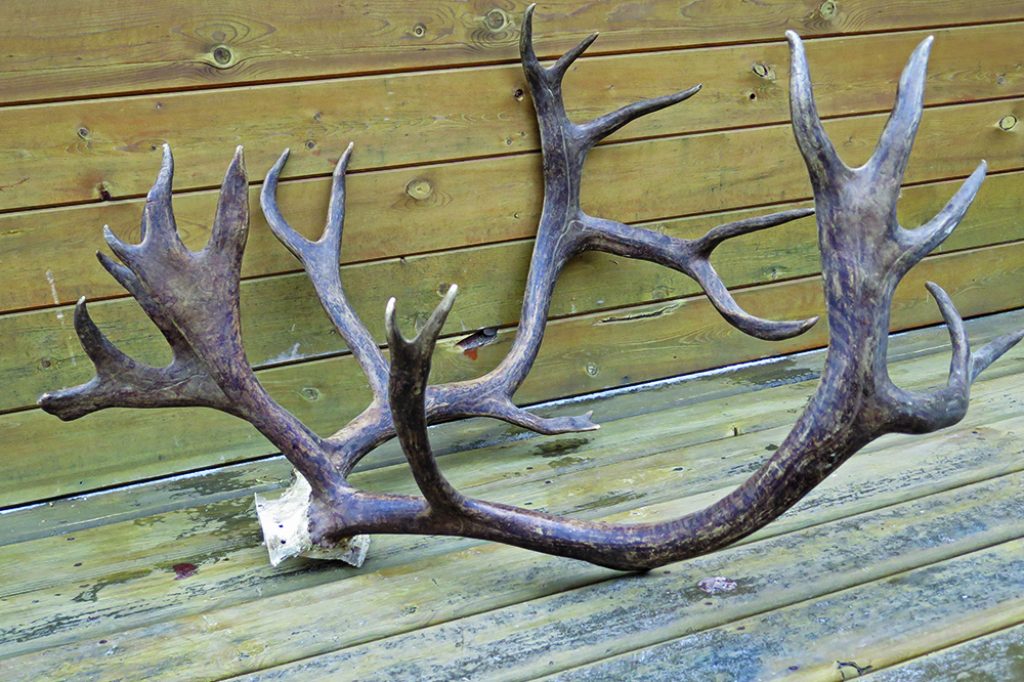
Talking about mountain caribou can get confusing, as how the various subspecies of caribou are classified depends on what source you use. Over the years, biologists and taxonomists have changed their minds many times. There are those who micro-analyze the differences in caribou from various areas and different habitats, resulting in a large number of subspecies. Then there are those who want to simplify things and only identify a small number of subspecies.
All caribou are native to the cold, harsh landscapes of the Northern Hemisphere. They are found in Greenland, northern Europe, across Russia, Alaska, all of the Canadian territories, and from the province of British Columbia in the west, all the way east to Quebec, Labrador, and Newfoundland. In the Scandinavian countries they are called reindeer, but whether you call them reindeer or caribou they are all the same species, Rangifer tarandus.
The Canadian Wildlife Federation divides the caribou in Alaska and Canada into four subspecies: the Grant’s caribou in Alaska and northern Yukon east to the Mackenzie River; the woodland caribou in the southern Yukon and southwest portion of the Northwest Territories and British Columbia east to Quebec and Newfoundland/Labrador; the barren-ground caribou from the Mackenzie River east through the mainland of the Northwest Territories and Nunavut, as well as the extreme north of Saskatchewan and Manitoba and Nunavut’s Baffin Island eastward to and including the west side of Greenland; and the diminutive Peary caribou on the islands of Canada’s high Arctic in Nunavut.
However, under the Canadian Species at Risk Act there are apparently only three types of caribou in Canada: Peary caribou, barren-ground caribou, and woodland caribou. But a quick check of Canadian Geographic’s list of Canadian subspecies includes woodland caribou, Peary caribou, barren-ground caribou, boreal caribou, Southern mountain caribou, and mountain caribou. Are you confused yet?
As hunters, we have been measuring and recording the antlers of caribou in record books for a long time. There are several different organizations with record books that record the size of big-game animals and they don’t all agree on the boundaries used to identify subspecies or the method used to score the antlers, horns, or skulls. That said, for the purposes of this article, I am going to rely on the data published by the well-known and respected Boone and Crocket Club. B&C recognize five types of caribou: the barren-ground caribou of Alaska and the northern Yukon; the central Canada barren-ground caribou; the woodland caribou of Newfoundland; the Quebec-Labrador caribou; and the mountain caribou.
The range B&C has established for mountain caribou includes all of British Columbia and Alberta, the southern half of the Yukon, and the Mackenzie Mountains of the Northwest Territories.
When the average person thinks about caribou, they usually think of the barren-ground caribou and the incredible migratory journeys vast herds of them make every year to their calving grounds and then back to their wintering areas, as depicted on hundreds of nature shows on TV. Mountain caribou, however, do not migrate over vast areas. This does not mean they are completely stationary, as they do migrate in a fashion for breeding season and to their wintering area, but most of their movement involves changing elevation between the open alpine country and the brushy or forested lowlands. This makes them much more reliable in terms of hunting, as they are always in the general neighborhood, unlike barren-ground caribou, which can be here today and miles away by tomorrow.
Mountain caribou are also big-bodied, with mature bulls being significantly larger than mature bulls of other subspecies. It is not uncommon for a big bull to weigh close to 600 pounds, and the mass of their antlers is often quite spectacular.
Over the years I have guided for mountain caribou in BC, the Yukon, and the NWT. When I first started guiding, BC was the number-one place to go for trophy mountain caribou and not much was in print about the excellent mountain caribou hunting to be had in the Yukon and the NWT. But as the years went by, more and more hunters learned about the mountain caribou hunting in the territories as the number of hunters heading north for Dall sheep and Alaska/Yukon moose increased.
Sadly, the mountain caribou hunting in BC has slowly gone downhill. Many decades of intense timber extraction has taken its toll in BC, with vast areas of old-growth forest being cut. Old-growth forest is exceedingly important for mountain caribou to winter in. Old-growth forest is also less productive for other members of the deer family, such as moose, deer, and elk. Less competition from other ungulates is a plus, but another very important side benefit is less predation by wolves, grizzlies, and cougars due to the lack of their preferred prey species.
In addition, a tremendous amount of access into former wilderness areas has been created by logging, conventional hard rock and placer mining, and in more recent times, the massive oil and gas industry. The population of BC has also increased enormously in the last fifty years, which naturally results in a lot more people enjoying various types of recreation in the backcountry. In addition to more hunters, there are many thousands of people who enjoy hiking, mountain biking, off-road vehicle use, and snowmobiling in the high country, and lots of people and the disturbances they create have had a negative impact on caribou.
Large chunks of BC that previously offered good mountain caribou hunting are now closed or opportunities have been significantly reduced with the advent of a limited entry draw system for residents. First Nations land claims and reconciliation efforts by the provincial and federal governments are also having an impact, and just last year a huge area of northeast BC was abruptly closed to caribou hunting by both licensed BC resident hunters and non-resident hunters via licensed guide/outfitters.
Despite all of the bad news, there is still some excellent, but very limited, hunting for mountain caribou available in BC. Many of the outfitters in both the northern Omineca and Skeena Regions still offer good to excellent mountain caribou hunting, either as a single-species hunt or combined with other species such as Canada moose, elk, Stone sheep, and mountain goat. There are also a handful of non-resident mountain caribou hunts available through a couple of outfitters in the Itcha-Ilgachuz Mountains area of the Cariboo Region in the west-central part of the province.
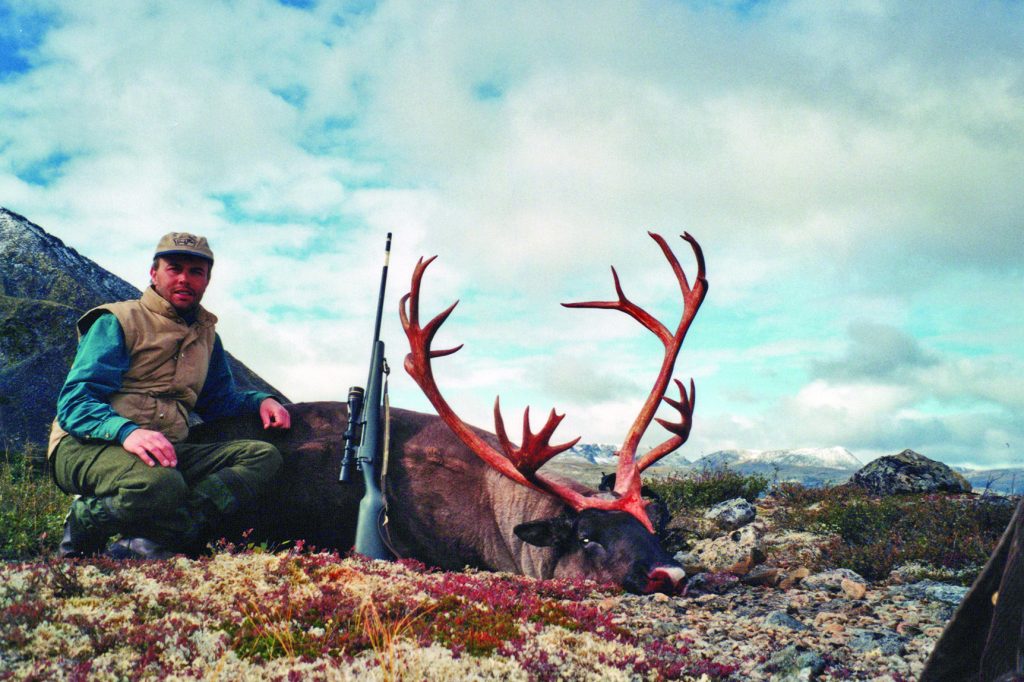
If you are serious about finding a big bull and not just a representative mountain caribou, the areas I would suggest concentrating on in BC are in the Skeena Region. The Kawdy Plateau and Spatsizi Plateau are known for producing big mountain caribou, as are the mountains close to the Yukon border from about Watson Lake west to the Alaska border. When contacting outfitters about their caribou hunts, it would be a good idea to look at operators in game management units 6-20 through 6-29. BC is noted for lots of beautiful country, but those who hunt in this part of the province are usually blown away by the scenery.
The Yukon and the Northwest Territories still offer exceptional mountain caribou hunting, and a quick check of the record book will reveal that there have been many high-scoring bulls entered that were taken in the two territories. The current No. 1 mountain caribou was taken in the Pelly Mountains of the Yukon in 1988 and scored 459 3/8. Outfitters in both territories usually produce a number of bulls that score well over 400 points every year.
While things are changing in the north as well, vast areas of both territories are still only accessible by float plane or chopper. It is also important to remember that the entire population of either the Yukon or the NWT is less than a small suburb of any of the larger cities in BC. The entire population of the Yukon is approximately 44,000, and 25,000 live in the capital city of Whitehorse. The NWT population statistics are not a whole lot different, with a total population of approximately 45,000, with 20,000 in the capital city of Yellowknife.
As with northern BC, the scenery in the Yukon and the Mackenzie Mountains of the NWT is breathtaking. Once you have been in this country you will undoubtedly want to go back, as you will have experienced true wilderness.
Most mountain caribou outfitters in northern BC, the Yukon, and the NWT offer horseback hunts, but some also offer backpack hunts as well. The backpack hunts are obviously designed for those who are in sheep shape and want a more physically demanding hunt, or those who just don’t get along with our equine friends. Not that being in good shape isn’t a good idea on the horseback hunts as well. Horses can go places you wouldn’t believe, but you should still expect that some hiking in steep country is going to be required.
My wife and I raised horses for thirty years, so I admit I am a little biased toward horseback hunts, but for what it is worth, I believe there are few things in life that can top a horseback hunt in the spectacular mountains of northern Canada for mountain caribou. In my experience, it is every bit as enjoyable and rewarding as a sheep or goat hunt.
When to Go
As is always the case, hunting seasons can vary from one jurisdiction to another. The mountain caribou season opens as early as July 25th in the NWT and as late as August 15th in northern BC. The seasons close between October 15 and October 31st.
Bulls are in velvet during August, but most will be in hard antler and stripped of velvet by the first week of September. The rut occurs during the last part of September and first part of October. It is worth noting that caribou taken on early hunts will not have the nice white mane that many hunters want on their bull, so if that is a concern you are better off to wait until the rut period. The downside to hunting during the rut is that most people consider the bulls to be inedible during the rut, and the later you go the more likely you will run into cold temperatures and the chance of significant snowfall.
One fall, Wendy and I had a few days off between groups of hunters smack-dab in the middle of the rut. I decided we should spend a few days caribou hunting for ourselves, as I wanted to get a big bull with a flowing white mane to mount. As luck would have it, on the first day we spotted a beautiful bull with double shovels and a gorgeous mane, so I put my .338 Winchester Magnum to good use, and we were soon packing the bull down out of the alpine.
The bull smelled rather rutty, but we decided to try frying up some of the tenderloin for supper anyway. I was outside of the tent tending to the horses when I started to smell something awful. Honestly, it smelled like someone had urinated in a hot frying pan. There was no way we were going to be able to eat it as not even a good dose of garlic powder could disguise the horrid odor. Not wanting to waste it, we tossed it to our red Australian cattle dog. This was a dog that had been known to eat things that he had found in the bush that were hardly recognizable to look at, but he took one whiff of that tenderloin and turned and walked away. Not even the ravens that hung around camp would touch it.
Mountain caribou hunts are getting a lot more attention these days due to the significant decline in numbers of some of the other caribou subspecies. The Central Canada barren ground caribou herds and the Quebec/Labrador caribou herds have suffered a significant drop in numbers, which has resulted in sweeping closures in the barren lands of the NWT, Quebec, and Labrador. There has also been a noticeable decline in the numbers of Newfoundland’s woodland caribou, which resulted in much lower non-resident quotas. Even some of Alaska’s barren-ground caribou herds have seen a drop in numbers.
The result of the increased focus on mountain caribou has been what you would expect with supply and demand: mountain caribou hunts have increased in price. Despite that, mountain caribou hunts are still significantly cheaper than a hunt for sheep or mountain goat, and you get to experience all the same things that make mountain hunts so rewarding and memorable.
Optics and Rifles
Hunts in Canada’s North Country for mountain caribou are not a whole lot different from hunts for Dall sheep or moose. The weather can be extremely variable, with sunshine, rain, and snow all possible, even on the same day. Inclement weather, rocky terrain, brush, and many miles on horseback can all negatively impact your clothing and equipment. This is especially true for firearms and optics.
With the huge variety of protective coatings available these days for wood and metal, you can prep just about any rifle to withstand the abuse of hunting in a wilderness setting. That said, stainless-steel bolt-actions with composite stocks are the perfect choice for harsh environments and inclement weather.
A good variable scope of 2x or 3x low end and 9x to 15x on the high end should handle any situation you encounter, but emphasis should be on quality and reliability. The last thing you need on a hunt out in the middle of nowhere is a budget-priced scope that fails. Even if it has a lifetime replacement warranty, that is of little use to you partway through a hunt on a remote mountain in the Yukon Territory.
Binoculars between 7x and 10x are most common; if you rarely use binoculars and are not used to doing a great deal of glassing, stick with 7×40 or 8×40. If you are used to glassing, I would lean toward 10×40 binos for mountain hunting. Here again, a quality pair that can handle a few bumps and inclement weather is of utmost importance.
Riflescopes and binoculars should be kept as dry as possible; good lens covers and removable rubberized scope covers can protect your optics and bring peace of mind. In harsh conditions I will often use both flip-up lens covers on my scope and a rubber scope coat on top, unless I am in a situation where close encounters with big bears are likely.
Caribou are not huge animals, but a big bull mountain caribou is easily as heavy as a young bull elk. Anywhere you may hunt mountain caribou is also prime grizzly bear habitat, and you may also want to hunt a bull moose or bull elk as an add-on to the caribou hunt. While a .270 Winchester with a premium bullet will easily handle any caribou that walks, something that is more appropriate to handle the “just in case” situations might be a good idea.
Shooting distance can be anywhere from 25 yards to as far away as you can accurately place a bullet, but in most instances, you should be able to use the terrain to stalk within reasonable range, and it is rarely necessary to shoot beyond 300 yards.
For the above reasons, hunters are probably better served with a flat-shooting rifle that provides a little more downrange thump than the previously mentioned, but highly respected, .270 Winchester. A 7mm Magnum of some description would be a better choice, but probably one of the various .30-caliber magnums would be just about ideal.
I tend to pack around a .338 Winchester Magnum loaded with either 210-grain or 225-grain Barnes TTSX most of the time, but I have been carrying it for many decades as a backup rifle while guiding and I am plenty used to it. The recoil does not bother me at all, but it seems to be more than most hunters want to deal with.–K.R.



